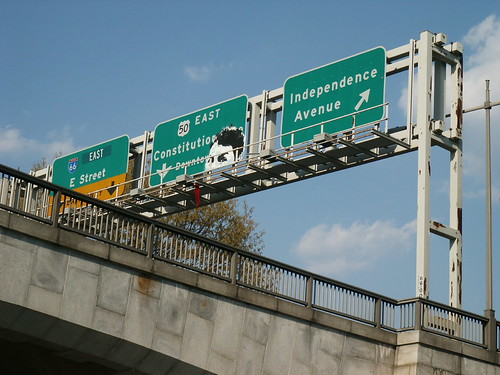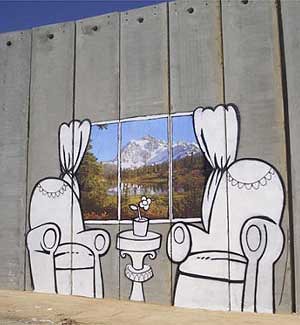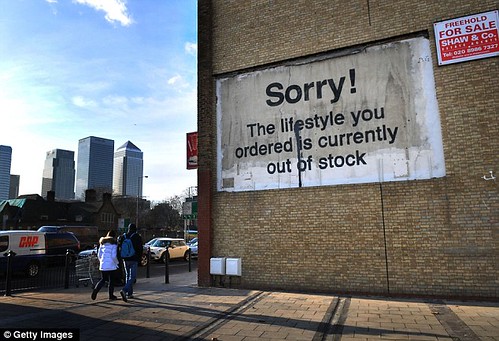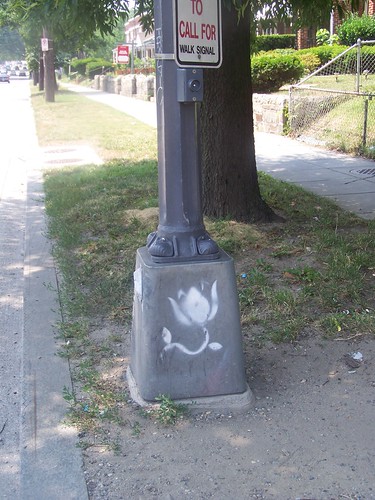There is nothing to celebrate in the tags of Cool Disco Dan
Graffiti is a tough issue when it comes to urban revitalization. Many people see graffiti as an indicator of disorder, which makes it that much harder to rebuild and reinvest in neighborhoods, to attract visitors etc.
At the same time, there are a variety of types of graffiti.
A doughnut shop in Dupont Circle, for whatever stupid reason, wanted to pay "homage" to Cool Disco Dan in its name, but people objected, calling it a commodification of black culture. See "Cool Disco Donut Changes Name to Zeke’s D.C. Donutz" from the Washington City Paper.
Cool "Disco" Dan tagged buildings throughout the city in the 1980s and 1990s, and I aver there was absolutely nothing artful in his "work".
I don't see how anyone can call it much different from a dog pissing on a tree, marking his territory. The territory is marked, but nothing is added by the marking. The same goes for many other taggers, including "Koma" and "Nores", who tagged throughout DC in the early part of the last decade. See "2 Charged With Graffiti: Md. Men Spray-Painted in Much of D.C., Officials Say" from the Washington Post.)
I just don't see what there was to celebrate. (However, Suzanne counters that with time, the work has gained meaning and achieved status among people who live in the city, even though it is incredibly simplistic, much different from the graffiti that has come afterwards stylistically, and that despite this simplicity, later taggers didn't cover it over with newer work.)
Image from Art Crimes article.
Other graffiti makes a statement, either politically or artistically. (Suzanne calls this commentary.)
And because I appreciate discourse, protest, and art, I can see value in this. See for example work depicted in the publication Beautiful Decay.
For example, Banksy's pieces on the West Bank wall separating Jordan and Israel are incredibly provocative.
Or even the gutsy move of Borf to tag a highway sign. ("The Mark Of Borf" and "With Guilty Plea, Borf to Try the Art of Graffiti" from the Washington Post.) But I am still glad he was caught and stopped. His tags defaced so many DC buildings, at a great cost.
There is also the interesting point that many taggers are suburbanites who come into the city and deface it, because their work is visible in the city and invisible in the suburbs.
From an urban revitalization standpoint, most people don't make distinctions. Any marks are seen more like a dog pissing on a tree.
But I will concede that some graffiti artists do make us think or appreciate or consider the world in different ways.

This image, from Flickr by barkingmoose. The next two images below depict work by Banksy. First image, photographer unknown. Second image by Getty Images. See article from the Daily Mail. The last image is from DC.



Labels: disorder, graffiti, protest, urban design/placemaking, urban revitalization




3 Comments:
Of course I'm a lover of graffiti and especially that era of art. But I cam of age in it. (Curious to see the New Museum's show on 1993. Figure this is the moment for late Gen Xers like myself to claim our cultural ascendancy.)
And I would say Cool Disco Dan fits well into that vain. He was incredibly important for that era and his sheer proliferation is what his style (and simplicity) was all about. Dan would tag EVERYWHERE. And place that seemed impossible to get to. He really defines the essence of tagging, the throw-up -- which is first and foremost about branding yourself everywhere. Big wall pieces take time and get only seen by a few.
The essence of Dan's tagging is almost a commentary on the proliferation of brand names. It had the reach of Coca Cola or a Starbucks but all done by one person. Graf artist as brand statement. If you look at the artists that came of age in the 1980s -- Haring for instance. That art everywhere. That brand everywhere. That's their legacy.
Dan, like Haring was, is also a really sweet guy. Like LL Cool J. Calling himself "cool" was self aware and ironic. He was awkward and too friendly. Just a sweet guy.
And h e so very much defines the art production of DC in that era. People speak of him like they do of 1980s DC hardcore. It's DC that for better or worse is lost. I do think DC has lost something even if the city is more "orderly". Order is always a good thing.
My two cents.
I was surprised at the backlash however. Apparently people found it grass for a yogurt shop -- that symbol of gentrification -- to take on that name.
hmm.
cf. adbuster's. It does remind me of a 2000 AD comic that I read in the 1980s about a graffiti artist and a robot graffiti artist in Mega City One. They were both concerned about whether or not they existed, and how graffiti was a way to do so. There was the double irony of robot vs. person as well. "Chopper rules okay."
http://en.wikipedia.org/wiki/Chopper_(Judge_Dredd_character)
I guess there is a documentary on CDD too.
http://www.complex.com/art-design/2013/01/documentary-the-legend-of-cool-disco-dan-pays-respect-to-the-influential-dc-tagger-video
Showing at AFI on 2/23
Post a Comment
<< Home